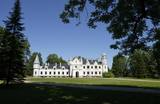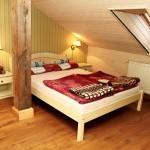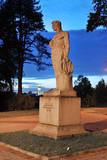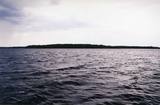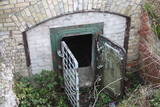| Nr | Name | Beschreibung |
|---|---|---|
|
Der Bauernhof Pärnamäe auf der Insel Kihnu hat bereits viermal die Auszeichnung des schönsten Hauses gewonnen. Die Gastgeberin bereitet hausgemachtes Essen, traditionelles Kihnu-Brot und geräucherte Fische zu, die man auf dem Kihnu-Hafenmarkt kaufen kann. Unterkunft wird in drei bequemen Sommerhäusern angeboten. Im Winter werden hier die einzigartigen Kihnu-Teppiche gewebt. |
||
|
Das Schloss Alatskivi zeigt eine Exposition in drei Stockwerken, die über das Leben und Geschichte einer Familie im Gutshof erzählt. Lassen sie sich von den Schlossguides durch die Legenden und Geschichten führen, basteln sie sich selbst ein persönliches Souvenir. Das märchenhafte Schloss im östlichen Teil von Estland erwartet sie! |
||
|
This tour offers a panorama of three Baltic countries - Lithuania, Latvia and Estonia visiting the most important cities and towns. Explore the capitals and smaller towns at your own pace, travelling by train and bus. Enjoy the capitals with their vibrant rhythm, medieval Old Towns in the middle of modern cities, romantic seaside resorts and charming small towns with attractive architecture. The tour starts in Vilnius, the capital of Lithuania. Kaunas and Klaipėda are popular tourist attraction towns. The Curonian Spit is a scenic 98 km long sand-dune, a UNESCO World Heritage Site. In Latvia you’ll visit Riga, the capital, several cities with ambient historical old towns Liepāja, Ventspils, Tukums, Jūrmala, and Kuldīga Old Town that is included in the UNESCO World Heritage List of Latvia. In Estonia visit Pärnu and Haapsalu resort towns, and Tallinn, the capital. As an option you can take extra few days to visit Kuressaare which is the capital of Saaremaa island. Tourist information centres in cities and towns will help you with maps, information on sights, attractions and guided tours, food, shopping and public transport. |
||
|
Atrodas Rīgas – Ventspils autoceļa (A 10) 88. kilometrā, pašā Abavas krastā. Pie stāvlaukuma interesants objekts – senais Zemgales un Kurzemes robežstabs un vēsturisko novadu robeža. Piedāvā kempinga pakalpojumus. |
||
|
Der Hof befindet sich dort, wo sich einst das Gut Alt-Geguzine am Ufer der Neris befand. Die Besucher haben hier die Möglichkeit, Boot auf der Neris zu fahren oder mit Fahrrädern die Gegend zu erkunden. Die Inhaber des Hofes sind Architekten, die Kurse zur volkstümlichen Architektur anbieten. |
||
|
Ein Denkmal für den Landwirtschaftsminister der Lettischen Republik Arturs Alberings. Ein vom Bildhauer Kārļis Zemdega errichtetes Denkmal wurde 1939 aufgestellt. Dieses Denkmal stellt einen Jungen mit einem Handkorb fürs Getreide dar. In der Sowjetzeit verschwand das Denkmal und an dieser Stelle wurde einen Pionier aus Gips aufgestellt. 1977 haben die Kinder die vergrabenen Teile des Denkmals gefunden, aber 10 Jahre später – den Kopf des Denkmals im Fluss Rūja. Zurzeit ist das erneuerte Denkmal an seinem ursprünglichen Ort zu sehen – im Ternejas Park nahe der Rīgas Straße. |
||
|
Der Bauernhof und die Molkerei Mätiku betreibt Milchproduktion und -verarbeitung und züchtet auch Legehennen und Schafen. In der kleinen Molkerei werden verschiedene Milchprodukte aus der Milch von eigenen Kühen produziert. Nach vorheriger Anmeldung kann man den Bauernhof besichtigen, sich mit seiner Arbeit vertraut machen und die Produkte verkosten. |
||
|
Das ist Lettlands ältestes Naturreservat und, in der Tat, das älteste geschützte Gebiet des Landes. Moriscala ist eine Insel im See Usma, der der fünftgrößte See in Lettland ist. Das Reservat wurde 1912 auf Initiative einer Gruppe von Naturstudenten von Riga begründet. Sie wollten den Eichenlaubwald auf der Insel schützen und zugleich die örtliche Flora und Fauna. Das Naturreservat schließt auch die Insel Lielalksnīte ein. Besuche des Reservats sind jedoch streng verboten.
|
||
|
Käserei oder auch Glockenturm (wegen der Glocke, die ins runde Fenster des Dachs eingebaut ist), befindet sich bei den Eingangstoren des Landguts Naukseni. Ein achteckiges Steingebäude ist mit einem kuppelförmigen Blechdach bedeckt. Der Glockenturm ist zweigeschossig. Der erste Stock ist gut durchlüftet, mit kleinen länglichen Fenstern, die sich an allen Fasadenflächen des Gebäudes befinden. Die Käserei ist schon auf einer Zeichnung des Etnographs J.H. Brotze (um das Jahr 1800) zu sehen. Man kann merken, dass sein ursprüngliches Aussehen hat das Gebäude bis heute erhalten. In der Sowjetzeit ist der Zustand des Turmes schlechter geworden – ein Schuppen wurde angebaut und eine große Wandöffnung durchgeschlagen. Im Jahre 2002 wurde das Renovierungsprojekt des Käsereiturmes erstellt und realisiert (Arch. I. Maurāne). In den Innenräumen sind ein historischer Herd aus den Ziegeln und eine Treppe zum ersten Stock erhalten geblieben. In der Käserei sind etnografische Gegenstände platziert und heutzutage ist die Käserei eines der touristischen Objekte des Landguts Naukšēni. |
||
|
Das Gotteshaus war von 1932 – 1938 an der Stelle einer alten Holzkirche nach einem Projekt von J. Cīruļis erbaut worden. Bis 1994 befand sich hier ein Filmverleih. Heute kann man in der Kirche eine Fotoausstellung über den Bau der Kirche besichtigen – „Vom Fundament bis zur Turmspitze, alte lettische Kirchenbauämter in Fotografien. Vom 37m hohen Glockenturm aus hat man einen Blick über die Stadt . |
||
|
Brīvdienu mājas "Korķi” apkārtnes priežu mežā ir izveidota Jāņtarpiņu taka. Ideāla vieta aktīviem sēnotājiem un ogotājiem. Savukārt saules un jūras cienītāji pa šo taku 5-10 minūšu gājienā nonāks Vitrupes pludmalē, kur varēs baudīt sauļošanās un peldēšanās priekus.
|
||
|
Am Rande der historischen Poststraße in Põlvamaa befinden sich die Bauernküche und das Ferienhaus Kopli, wo Freude und angenehmer Geschmack vorherrschen. Angeboten werden von der Bauernküche Kopli ein gemütliches Zusammensein und Dienstleistungen eines privaten Restaurants. Im Sommer ist ein Café geöffnet. Hier macht man Gelato-Eis das ganze Jahr über. |
||
|
Das Café befindet sich neben der alten Backsteinbrücke von Kuldiga mit herrlichem Blick auf die „Ventas Rumba", den breitesten Wasserfall Europas. Grillgerichte im Sommer, Burger, Steaks, Schaschlik und Gebäck. |
||
|
The five-story hotel with a tower at its centre was built in the style of Neo-Classicism between 1933 and 1936, and it is known as the "White House" or "White Ship." The building is seen as one of the most outstanding structures of the first period of Latvian independence, and it was one of the symbols of the independent state. The building has survived, as have some of the interior design elements and artworks of the vestibule, music salon, library and dining hall. The Ķemeri Hotel is also known for having served as a set for the Aigars Grauba film "Terrible Summer." In 1998, the sanatorium was privatised by the Ominasis Italia S.R.L. company. Restoration has continued for more than a decade, and the building can only be viewed from the outside. There is a garden on its western side. |
||
|
Das Café befindet sich auf dem Marktplatz von Vecpiebalga, gegenüber der evangelisch-lutherischen Kirche. Es arbeitet mit lokalen Bauern zusammen und verkauft die Produkte der Räucherei Piebalgas kūpinātava. Lettische Küche: Knusprige Schweinhautstücke, Kartoffelpfannkuchen, kalte Rote-Beete-Suppe, gebratenes Schweinefleisch, Lammwürste mit geschmortem Kraut, hausgemachte Bratwürste, Zanderfilet, dünne Pfannkuchen, in Piebalga gesammelter Honig, Sumpfbrombeeren-Marmelade, Erdbeersuppe mit Eis. Das besondere Gericht: Soljanka von "Ķeņcis". |
||
|
This tour offers visiting UNESCO World Heritage sites – Helsinki, Stockholm, Riga, Tallinn, travelling by ferries and cruise ships and adding value to the trip by exploring the Baltic countries beyond the capitals. The sites outside cities present traditional folk cultures of Finland, Sweden, Estonia and Latvia and a variety of farms showing today’s life in the countryside. The roundtrip includes two overnights on cruise ships. |
||
|
Das Restaurant befindet sich am Platz des Herzogs Jacob. Köche verwenden hier lokale Produkte und arbeiten mit dem Hirschgarten Rudiņi zusammen. Lettische Küche: Kalte Suppe, Hirschgulaschsuppe, Hirschschnitzel, gebratener Zander oder Wels, Schweinebraten, geschmortes Lammfleisch, Kartoffelpfannkuchen, Dessert aus Sanddornbeeren. Das besondere Gericht: Rindersteak auf Stein. |
||
|
Der Befestigungswerk von Komēta wurde am linken Ufer des Flusses Daugava, an der Einmündung des Flusses ins Meer – in der Umgebung von heutigen Leuchtturm in Daugavgrīva etwa um die Zeit der Bauarbeiten an der Befestigungswerke in Mangaļsala (um das Jahr 1808, aus anderen Quellen – um das Jahr 1788). In diesem Befestigungswerk befindeten sich vier Positionen der Geschütze des Kalibers 152 des Typs „Kane”. Sowohl der Befestigungswerk Komētforts, als auch die Küstenschützbatterien in Mangaļsala haben im Jahr 1855 in der Flussmündung von Daugava den Angriff der englischen Flotte abgewehrt. Komētforts ist ein Kulturdenkmal örtlicher Bedeutung. Wenn wir entlang der Meeresküste von Naturschutzgebiet in Daugavgrīva in der Richtung Leuchtturm von Daugavgrīva gehen und auf die Vorderdünne hinaufsteigen (nur bis zum Warnungszeichen „Gesperrtes Territorium. Grenzzone”!) sind sowohl die obengenannten Positionen der Geschütze, als auch die ehemaligen Lagerkeller der Munition sichtbar. Die Positionen der Geschütze nehmen seinen Anfang 0,5 km vor dem Leuchtturm von Daugavgrīva an und sie erstrecken sich bis zum Komplex des Leuchtturms. Auch in der Zeit der Sowjetunion war das Territorium für Zivilpersonen geschlossen, weil in dieser Umgebung und in Bolderāja viele heimliche Militärobjekte der sowjetischen Armee aufgestellt waren.
|
||
|
This is the thickest common juniper (Juniperus communis) in Latvia and the Baltic States. It stands in the middle of a field and looks wonderful. The tree is sometimes known as the Rieteklis juniper, because the Latvian poet Rieteklis (Jūlijs Eduars Balodis, 1856-1940) like to sit under it.
|
||
|
Atrodas ~ 1,5 km ziemeļos no Krāslavas centra, Jāņupītes krastā (ir norāde). Pēc atsevišķiem savrupatradumiem var spriest, ka pilskalns apdzīvots laikā no I g. t. pr. Kristus līdz vēlajam dzelzs laikmetam. Domājams, ka savu nosaukumu tas ieguvis šeit sastopamo mālu dēļ. Nelielas mālu ieguves vietas pilskalna nogāzēs ir redzamas arī šodien. Saglabājies nostāsts, ka grāfs Plāters šeit apraudājis savu sievu, kuru pats neuzticības dēļ licis iemūrēt pazemē. |
||


